How To Safely Use Extension Cords – Avoid Electrical Hazards
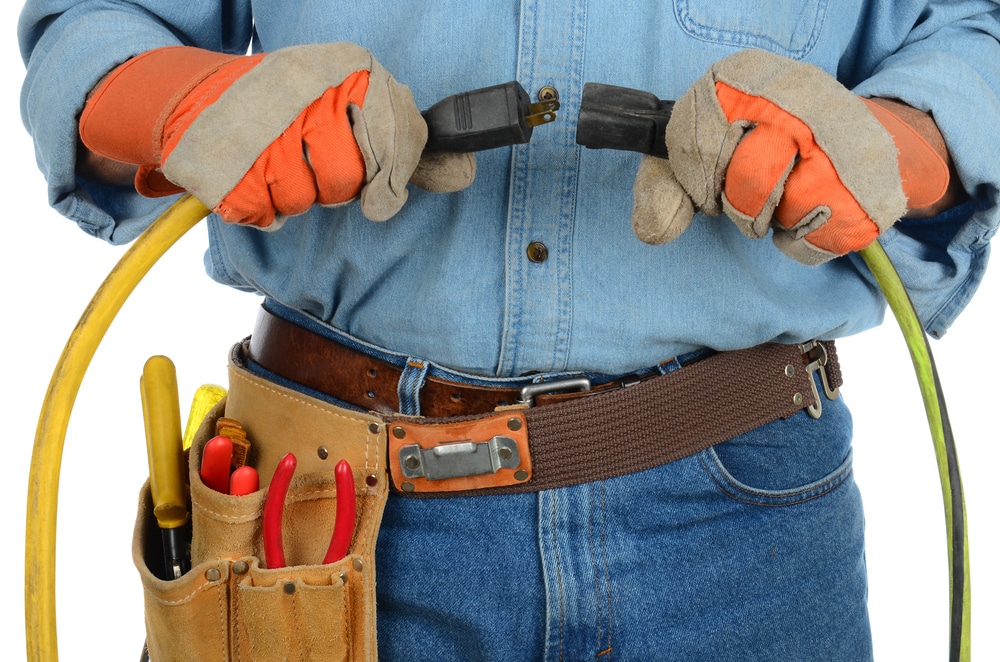
As an employee or contractor, you’ve likely been in a situation where the nearest electrical outlet is too far from where you need it. It’s when extension cords come to the rescue, providing the much-needed power boost to our electric devices.
But here’s a little nugget of wisdom: Using extension cords for permanent wiring (extended periods) is not recommended. If you find yourself in a spot requiring an extension cord for continuous power supply in a specific area, it’s high time you consider installing an electrical socket.
Please keep reading to learn more about electric cord safety tips to help avoid potential hazards. We dive into some essential advice from OSHA and the Electrical Safety Foundation International (ESFI) to help keep you and your devices safe. If you want to help educate your employees on electrical safety in the workplace, you should check out our electrical safety course.
Let’s plug into the knowledge and get started!
What Are the Safety Hazards of Extension Cords?
Understanding and practicing guidelines for extension cord safety is critical to preventing hazards in the workplace. So, let’s talk about the potential dangers of using an extension cord.
- Inspect those cords. If you spot any frayed sockets or loose connections, it’s time to give them some TLC before plugging them in. Bare exposed wires can give you quite an electrical shock or burn.
- Using indoor cords outside can create potential fire hazards.
- Damaged cords are no joke regarding a fire hazard. If you encounter any damaged ones, dispose of them and replace them with new ones. Safety first!
- Longer cords can be a recipe for disaster. They mess with the flow of electrical power and create resistance, which leads to heat buildup.
- Plus, if the cord is all covered up, the heat can’t escape, making it even more dangerous. It’s like trapping a ticking time bomb.
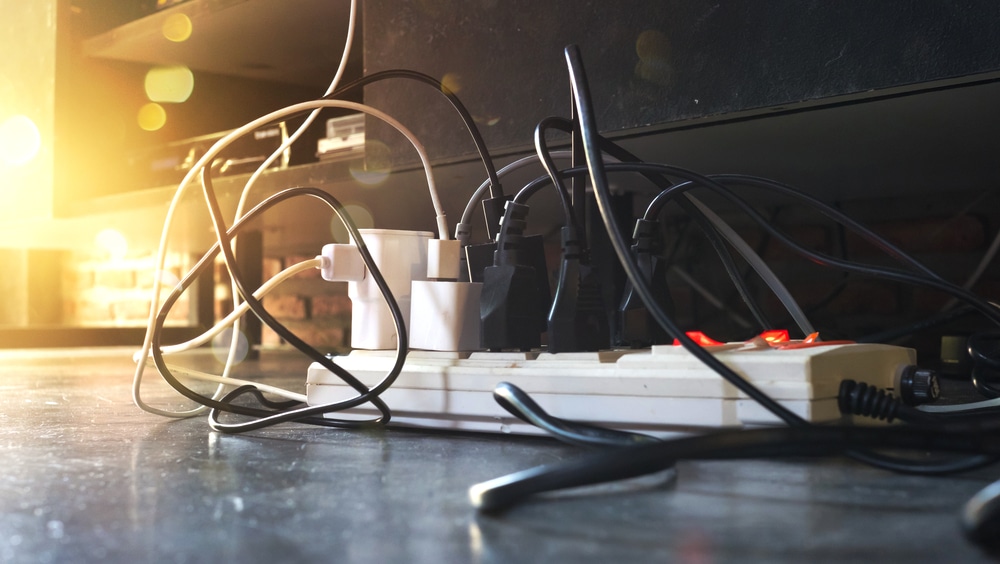
Preventive Measures for Minimizing Hazards
There are a couple of simple steps workers can take.
- Use plugs with a third prong whenever possible. It helps reduce the risk of electrical shocks and fires by providing a safe path for electricity to flow into the ground if something goes wrong.
- Purchase only cords approved by an independent testing lab.
You should also check out our complete list of electrical safety tips as well.
Connecting Grounded Cords Into 2-Prong Outlets
When you require an indoor extension cord for general use to power up trusty lamps, work lights, and other small electronics like hand tools, the “Type A” extension cord is ideal. Its 16-gauge wire thickness can handle a maximum of 13 amps or 1625 watts of electrical power. It’s more than enough to keep general appliances running smoothly and safely.
Typically, you use light-duty extension cords for them. These cords have two plug prongs but lack a third prong for grounding.
But if the devices in use have a three-pronged cord and the source is a two-prong outlet, how do you plug into it? The solution is using an outlet adapter designed for smaller appliances or devices.
However, it’s important to note that some appliances, such as space heaters, generate significantly high temperatures. Therefore, plugging them into an ungrounded receptacle and using an adapter can be risky. In such cases, avoiding using an extension cord or adapters altogether is best. Instead, rewire the wall socket to ensure safety.
Also, remember that space heaters must always get plugged directly into the outlet to reduce the fire hazard. Don’t be tempted to cut off the ground pin of the plug to make it fit. And don’t force a plug into an outlet if it doesn’t fit snugly.
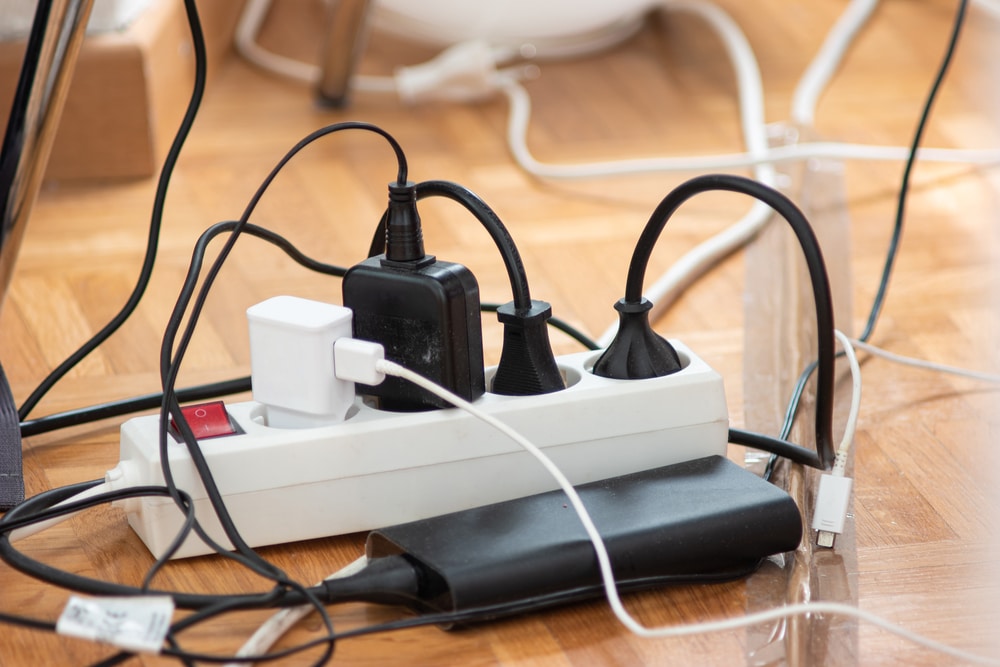
Extension Cords for Challenging Work Environments
Regular cables might not hold up well when they come into contact with chemicals, making them all swollen and fragile. There are oil-resistant cords specifically designed for places where fuel and fertilizers are the names of the game.
These tough cords are ideal for farm work or tackling projects in a bustling machine shop.
What Is the OSHA Standard for Extension Cord Safety?
According to the OSHA construction standard, the extension cords used in such environments must have a “hard” or “extra-hard” usage rating. These ratings are determined based on guidelines from the National Electrical Code. You can identify these ratings because the cord is marked every foot along its length.
Flat-wire cords are a no-go on construction sites. Why? Well, they don’t offer the same protection level as double-insulated cords.
Employees and contractors must choose the right extension cord to prevent accidents. Extension cord designations can determine whether it is suitable for the specific task. It includes:
- S: General Indoor Use
- W: Rated for Outdoor Use
- J: Standard Insulation
- T: Vinyl Thermoplastic
- P: Parallel Wire Construction
- O: Oil-Resistant
- E: Made from TPE
*Standard household extension cords will be S and P, respectively, with P used in household and air conditioner cords.
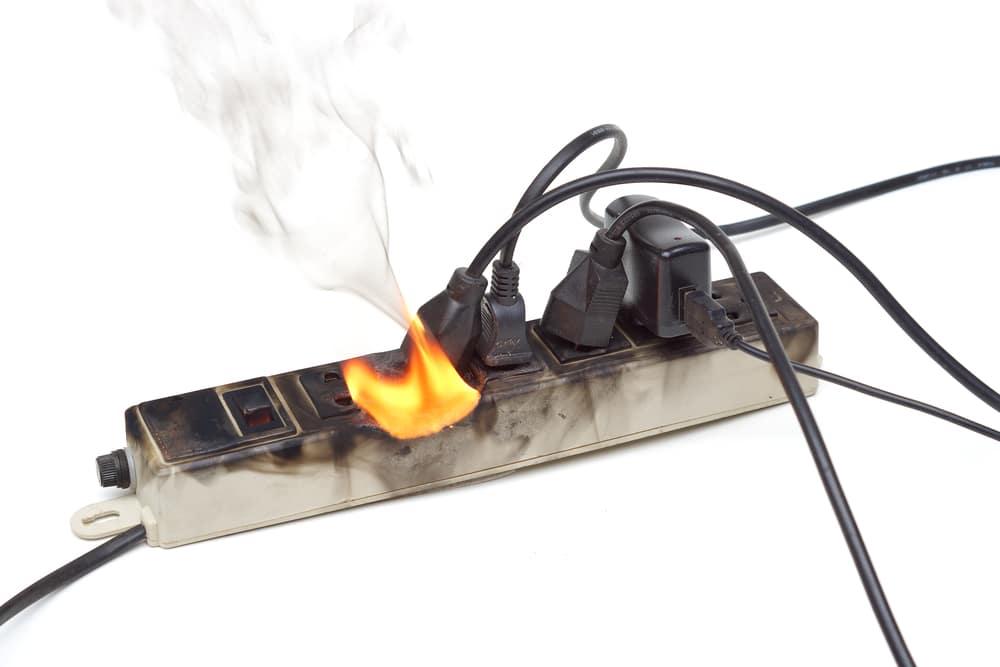
Choosing the Right Cord for Your Needs: Amp Rating and Wattage
Extension cords may have a different amp rating and can handle different amounts of power depending on their length. Refer to extension cord wattage charts to determine the appropriate wattage and amp limits. These charts categorize cords based on distance, such as 25 ft, 50 ft, 100 ft, and 150 ft.
The wire gauge, which refers to the thickness of the wires inside the cord, also plays a role in determining how much current the cable can carry and how much it heats up. The American Wire Gauge (AWG) is used to indicate the size of a cord. For example, a smaller AWG number means a thicker wire, allowing the cable to safely handle the electrical current.
AWG consists of the following:
- 10 AWG (Extra Heavy Duty Cord)
- 12 AWG (Heavy Duty Cord)
- 14 AWG (Medium Duty Cord)
- 16 AWG (Light Duty Cord)
The power requirement for a tool or appliance is indicated in the wattage rating to ensure proper functioning.
Look for that wattage rating, then choose a cord length that suits it. By doing so, you’ll optimize the performance of electronic devices, ensuring they’re running smoothly and efficiently.
What Are the Safety Rules with Extension Cords?
Fire and electric shock are avoidable using the right extension cord and proper safety protocols. Here are some ways to use extension cords properly:
- Always use GFCI protection when using extension cords outside.
- Do not use multiple cords connected (use one long cord instead)
- Don’t use an indoor extension cord outdoors.
- Don’t run extension cords underwater, snow, rugs, furniture, or through walls, doorways, ceilings, and floors.
- When using an appliance with three-prong plugs, make sure to use extension cords that have three wires. Keep the third round or U-shaped prong intact.
- Ensure to cover any unused receptacles on indoor and outdoor extension cords.
- It’s important to avoid pulling on the cable when unplugging an extension cord. Instead, make sure only to pull on the plug itself.
- When dealing with wet or water-damaged equipment, unplug it before attempting any rescue mission.
- Remember to keep everything dry and away from the water when using electrical equipment outside or around swimming pools, spas, or hot tubs.
- Please ensure you buy a cord rated appropriately for the products getting plugged into it, especially for outdoor use.
How To Connect Multiple Extension Cords?
Don’t plug extension cords into one another because it can cause problems like increased voltage as electrical resistance lowers and may cause an electrical overload. There are safer alternatives.
You can use an extension cord adapter to extend the reach or opt for a longer cord in the first place. Additionally, it’s crucial to avoid powering multiple appliances with just one cord to prevent any potential hazards.
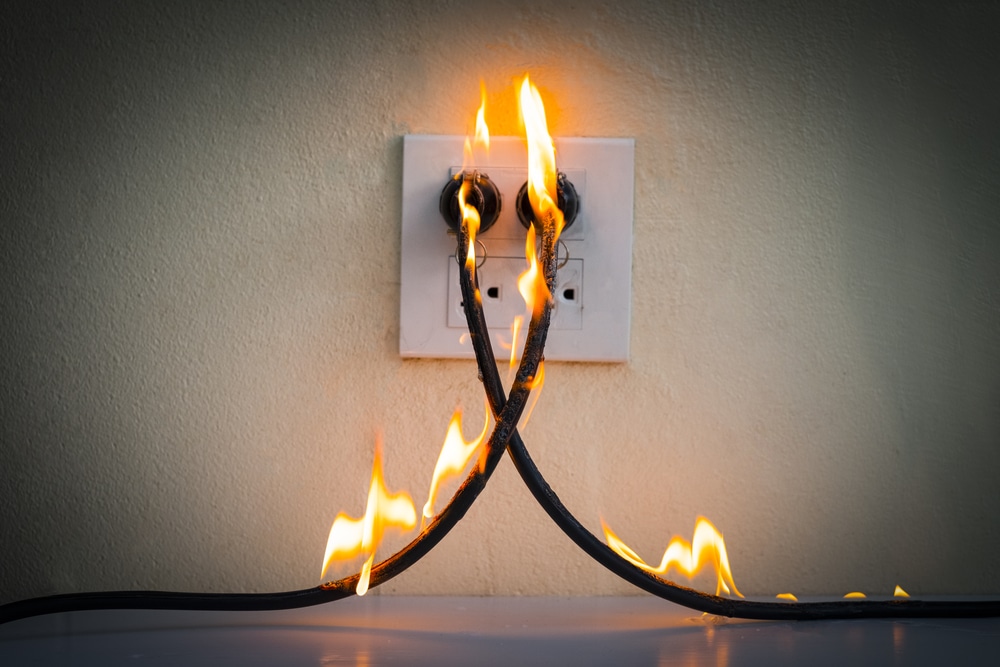
Commercial Equipment Considerations
Cord length is an essential factor. It may seem convenient to use longer extension cords, but it puts more strain on the motor, which causes it to work harder to draw power for the unit. This increased workload can lead to a shorter lifespan for the engine.
Dealing With an Electrical Fire
It’s common sense electricity and water don’t mix, but when things get heated and there’s an electricity-caused fire, it’s easy to think that dousing it with water might help.
Instead, grab a chemical fire extinguisher, and remember never to block your exit!
Is It Safe To Always Leave an Extension Cord Plugged In?
Extension cords are responsible for around 3300 fires yearly. In addition, electrical fires sparked by those innocent-looking cords are responsible for about a third of all home fire-related deaths.
Remember to follow safety procedures and unplug extension cords when not using them. Doing so reduces the fire risk while keeping yourself and your colleagues safe from fires, shocks, and falls.